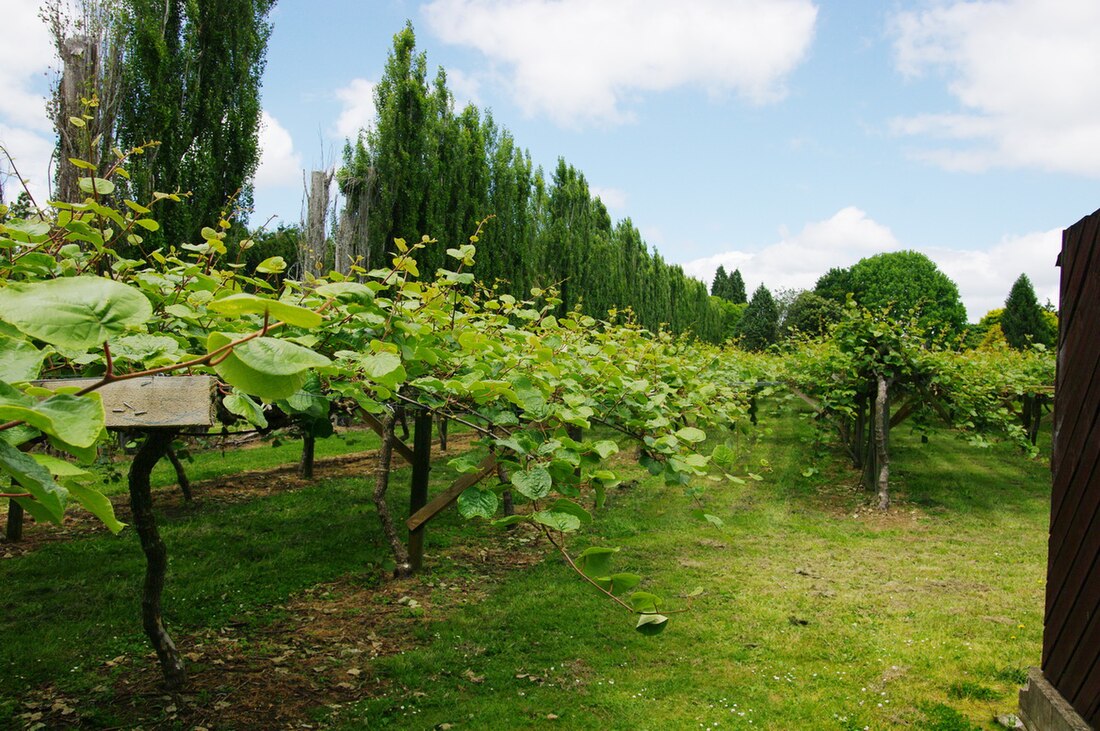Top Qs
Timeline
Chat
Perspective
Western Bay of Plenty District
Territorial authority district in Bay of Plenty, New Zealand From Wikipedia, the free encyclopedia
Remove ads
Western Bay of Plenty District is a territorial district within the Bay of Plenty Region of New Zealand. The district envelops Tauranga city by land, and includes Matakana Island, at the entrance to Tauranga Harbour.
Remove ads
Local government
Summarize
Perspective
The seat of the Western Bay of Plenty District Council is at Greerton in Tauranga City (which is a separate area that is not part of the district). The district came into being in the local government reorganisation of 1989; with minor modifications to the boundaries, it merged the old Tauranga County and Te Puke Borough. The most significant changes were in the northwest, with Waihi Beach being transferred to the district from the old Ohinemuri County, and near Tauranga City, where some of the hinterland, formerly in the county, was transferred to the city.
Wards
For the purposes of electing district councillors, the wards within the district consist of the following:
- Waihi Beach-Katikati Ward: (seat at Katikati)
- Waihi Beach Sub-Division
- Katikati Sub-Division
- Kaimai Ward: (seat at Ōmokoroa)
- Te Puke-Maketu Ward: (seat at Te Puke)
Populated places
Western Bay of Plenty District consists of the following towns, localities, settlements and communities:
|
|
|
- Notes
- Partially shared with Tauranga.
- Partially shared with Whakatāne District.
Remove ads
Population
Summarize
Perspective
Western Bay of Plenty District covers 1,944.41 km2 (750.74 sq mi)[1] and had an estimated population of 60,800 as of June 2024,[2] with a population density of 31 people per km2. 2,670 live in Waihi Beach, 6,000 in Katikati, and 10,450 in Te Puke.
Western Bay of Plenty District had a population of 56,184 in the 2023 New Zealand census, an increase of 5,280 people (10.4%) since the 2018 census, and an increase of 12,861 people (29.7%) since the 2013 census. There were 28,041 males, 28,008 females and 135 people of other genders in 20,238 dwellings.[5] 2.0% of people identified as LGBTIQ+. The median age was 45.0 years (compared with 38.1 years nationally). There were 10,065 people (17.9%) aged under 15 years, 8,481 (15.1%) aged 15 to 29, 24,786 (44.1%) aged 30 to 64, and 12,852 (22.9%) aged 65 or older.[4]
People could identify as more than one ethnicity. The results were 80.1% European (Pākehā); 21.6% Māori; 3.4% Pasifika; 7.3% Asian; 0.8% Middle Eastern, Latin American and African New Zealanders (MELAA); and 2.6% other, which includes people giving their ethnicity as "New Zealander". English was spoken by 96.5%, Māori language by 5.4%, Samoan by 0.2% and other languages by 9.7%. No language could be spoken by 1.9% (e.g. too young to talk). New Zealand Sign Language was known by 0.4%. The percentage of people born overseas was 20.2, compared with 28.8% nationally.
Religious affiliations were 28.9% Christian, 1.2% Hindu, 0.2% Islam, 2.1% Māori religious beliefs, 0.6% Buddhist, 0.5% New Age, 0.1% Jewish, and 3.6% other religions. People who answered that they had no religion were 54.8%, and 8.4% of people did not answer the census question.
Of those at least 15 years old, 6,720 (14.6%) people had a bachelor's or higher degree, 25,533 (55.4%) had a post-high school certificate or diploma, and 11,763 (25.5%) people exclusively held high school qualifications. The median income was $37,700, compared with $41,500 nationally. 4,740 people (10.3%) earned over $100,000 compared to 12.1% nationally. The employment status of those at least 15 was that 21,597 (46.8%) people were employed full-time, 7,071 (15.3%) were part-time, and 1,146 (2.5%) were unemployed.[4]

Remove ads
References
External links
Wikiwand - on
Seamless Wikipedia browsing. On steroids.
Remove ads


